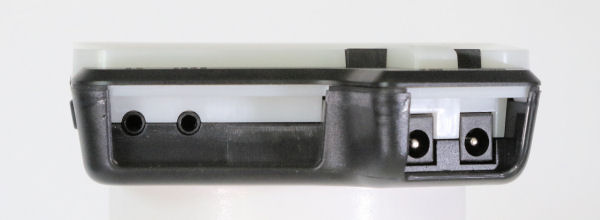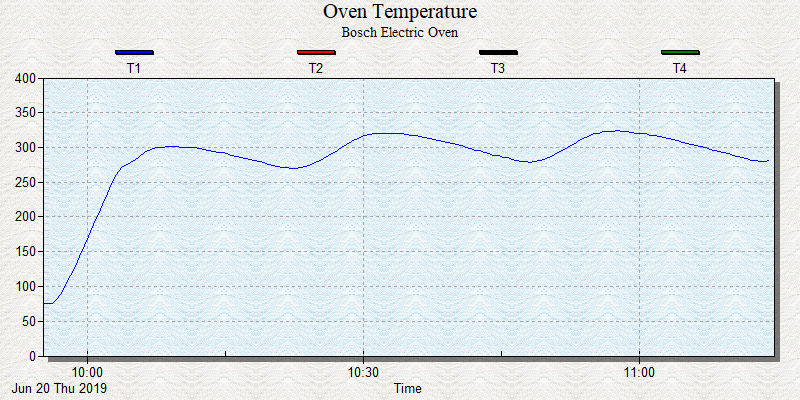 |
 |

The DynaQ, being an entry level controller, has no temperature display. As you will see later, you monitor the temperatures using an App for your smart device. However, there is the new light ring display which consists of several colored LEDs, a light ring and what is called a tail. Here we have labelled the components of the display for you:
Let us show you the various ways that the light ring is used to communicate information:
While you may find the light ring useful for at-a-glance status, you will find that in bright sunlight, you can barely see the color of the ring. Otherwise, the light ring and tail are a clever way to relay information about the state of the cooks. All the connections are on the bottom edge of the DynaQ unit. From left to right are the plugs for the pit probe, the food probe, the blower and the power cord. They are labeled on the front of the unit.

The bottom side of the DynaQ showing the connectors. There is a reset button on the left side of the DynaQ. You can do a factory reset by pressing and holding this button for four seconds. You can also do a factory reset from the BBQ Guru App. The reset button can also be pressed momentarily to reset the flashing red ring for a missing pit probe event, or a high pit temperature event.

The left side of the DynaQ showing the reset button. The DynaQ unit is powered by 12V DC. It comes with a power adapter that can be used with 100-240 VAC, 50-60 Hz. The power adapter has a 5-foot cord. Since the unit has a standard 5.5mm/2.5mm 12V barrel socket on it, you can use an automobile jump start battery with a cigarette plug to power the unit. It is important to note that for the first time, the power supply comes with a separate power cord that must be attached to the power supply via a plug with screw ring. While the plug is keyed, it is possible to insert the plug incorrectly far enough to make contact with the power supply and damage the power supply. Be careful when you install the cord to be sure that you get the plug inserted correctly. It is a good idea to make sure that the power cord is not plugged in while you attach it to the power supply in order to avoid an accidental mismatch that would damage the power supply.
You can see the plug incorrectly inserted in the photo on the left below. The middle photo shows the plug inserted correctly while the photo on the right shows the screw ring tightened and holding the plug in place.
The DynaQ comes with one pit temperature probe and one food temperature probe. The probes which come with the DynaQ are new and improved over previous probes sold by BBQ Guru as these new probes are now dishwasher safe.
The probes and the wires should be shielded from direct radiation from a hot fire. Do not let them come into direct contact with flames. If you need to shield the wire, you can place a layer of aluminum foil beneath it. Also, having the pit probe itself exposed to direct radiant heat can cause it to register a temperature which is higher than the air temperature in the cooker, and thus fool the controller into cutting back on the fire.
That said, we measured the temperature of boiling water using the DynaQ controller. Using our boiling point calculator to determine the boiling point of water in our locaton (211.6°F), we then measured the temperature of boiling water with each of the probes:
As you can see, both probes registered the same temperature at room temperature, and both were about 2 degrees high. As you can also see, both probes registered the same temperature of boiling water, but were about 0.7°F high compared to the actual boiling point of water. So, both probes were within the error limit for a Type T thermocouple, and exhibit more than enough accuracy to control the temperature of a cooker. And compared to the 50°F swing that is typical of most kitchen ovens, these results are phenomenal. Here is how well our $2200 Bosch oven holds 300°F:
 That's a 43°F swing on the last oscillation. Again, an error of a few degrees on your pit temp is irrelevant. The temperature probes cannot be calibrated, or more correctly, the DynaQ controller cannot be calibrated by the user. If your probes all consistently read off by a significant amount, you should contact BBQ Guru support to consider having them take a look. |
You can support this website by shopping at The Naked Whiz Website Store and Amazon.com
|